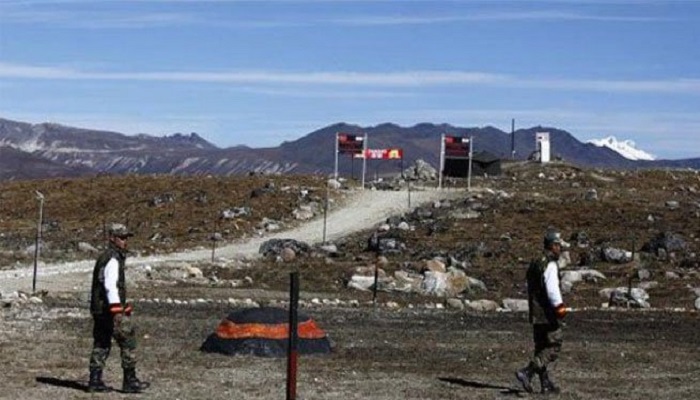
Letters of former Indian Prime Minister Jawahar Lal Nehru that was written to then China’s head Premier Zhou Enlai shows that he did not fully endorse the 1890 treaty between British India and China over the borders with Tibet and Sikkim.
These letters show marked differences that New Delhi had with Beijing on the boundary question in the mountainous tri-junction of China, Bhutan and India – the scene of a current standoff between the Chinese and Indian militaries.
This came into light when there is continuing standoff, where China accused Indian troops of “trespassing” in Doklam and dubbed it as a “betrayal” of a treaty signed in 1890.
Chinese foreign ministry spokesman Geng Shuang said at a media briefing that, “Former Indian Prime Minister, Jawaharlal Nehru endorsed the 1890 Sino-British Treaty on Sikkim in a letter to the then Chinese counterpart Zhou Enlai in 1959. Successive Indian governments have also endorsed this,”.
He said India needs to observe the treaty and pull back troops immediately from Doklam.
He also said that on a letter from Nehru to Enlai, written on March 22, 1959, that India’s protectorate state Sikkim’s border with China was confirmed by a treaty signed between China and Britain in 1890, and that the border was demarcated in 1895.
The treaty in question was the Convention between Great Britain and China relating to Sikkim and Tibet and signed between colonial Britain and China’s Qing dynasty in then-Calcutta in 1890.
Citing the treaty and another letter, Geng said: “On September 26, 1959, Nehru confirmed with Zhou that there was no dispute on the China-Sikkim border”.
That letter from Nehru to Zhou on September 26, actually, said more than what China is telling the world: broadly, India stood by the 1890 agreement only as far as northern Sikkim was concerned.
“This Convention of 1890 also defined the boundary between Sikkim and Tibet; and the boundary was later, in 1895, demarcated. There is thus no dispute regarding the boundary of Sikkim with the Tibet region. This clearly refers to northern Sikkim and not to the tri-junction which needed to be discussed with Bhutan and Sikkim and which is today the contentious area. And once more, let us not forget that the 1890 Treaty was an unequal treaty as Tibet, Sikkim and Bhutan were not involved,” Nehru wrote to Zhou in the letter.
Nehru also pointed out that boundaries of Sikkim and Bhutan needed to be included.
“It is not clear to us what exactly is the implication of your (Premier Zhou) statement that the boundaries of Sikkim and Bhutan do not fall within the scope of the present discussion. In fact, Chinese maps show sizeable areas of Bhutan as part of Tibet. Under treaty relationships with Bhutan the Government of India are the only competent authority to take up with other Governments matters concerning Bhutan’s external relations, and in fact, we have taken up with your Government a number of matters on behalf of the Bhutan Government,” Nehru wrote.
“The rectification of errors in Chinese maps regarding the boundary of Bhutan with Tibet is, therefore, a matter which has to be discussed along with the boundary of India with the Tibet region of China in the same sector,” Nehru added.
On Monday, Geng said India had “betrayed” China’s trust on the boundary question.
“The India-China boundary in the Sikkim section is well demarcated. The action taken by India is a betrayal of the position taken by the Indian governments,” Geng said, adding that India needs to follow the treaty and pull back troops immediately from Doka La.
Doka La is located on the margins of the Doklam plateau, also known as Donglang in Chinese.
On Friday, the Indian government said New Delhi was “deeply concerned at the recent Chinese actions” of trying to construct a road at Doklam (Donglang), which is situated at the strategic tri-junction between India, China and Bhutan. China and Bhutan have an ongoing territorial dispute in the region.
Geng had also cited a letter from Nehru to Zhou dated March 22. Again, the full text – or the picture – wasn’t presented.
Nehru did mention the 1890 treaty and wrote: “The boundary of Sikkim, a protectorate of India, with the Tibet Region of China was defined in the Anglo-Chinese Convention 1890 and jointly demarcated on the ground in 1895.” Of course, in the September letter, he clearly talked about the differences.
What Geng didn’t mention was that Nehru talked about the McMahon line in Bhutan in the same letter.
“The McMahon Line — as you are aware, the so-called McMahon Line runs eastwards from the eastern borders of Bhutan and defines the boundary of China on the one hand and on the India and Burma on the other. Contrary to what has been reported to you, this line was, in fact, drawn at a Tripartite Conference held at Simla in 1913-1914 between the Plenipotentiaries of the Governments of China, Tibet and India,” he wrote.
The former Indian PM added: “At the time of acceptance of the delineation of this frontier, Lonchen Shatra, the Tibetan Plenipotentiary, in letters exchanged, stated explicitly that he had received orders from Lhasa to agree to the boundary as marked on the map appended to the Convention.”

Post Your Comments